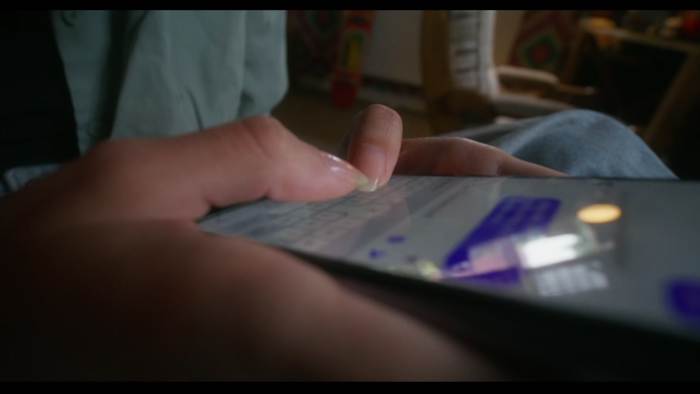
How Wrong Number Text Scams Work
Text message scams typically aim to quickly target your personal (i.e. financial) information. For example, fraudulent “bank fraud prevention” texts push victims to make immediate bank transfers, fake “gift” scams steal credit card details for small “shipping fees,” and fake package delivery notifications request bogus “redelivery fees.”
In contrast, wrong number text scams operate at a slower pace. Scammers start with a simple “wrong number” text and develop it into a friendly, ongoing interaction that becomes increasingly personal over time. After building enough trust, which can take days, weeks, or months, scammers will then request private information, often disguising it with an emotional appeal. This technique, known as “making the pitch,” is one you should be wary of.
It’s that personal info that leads the scammer to what they really want out of you: your money.
According to the FBI, scammers sending fake wrong-number text messages rely on your willingness to engage in conversation. They seek to capitalize on your friendliness and, once a connection is established, they may attempt to forge a friendship or even a remote romantic relationship. This approach is a deception intended to lower your guard so that you are more likely to fall for their scam, whether it involves a cryptocurrency investment or other schemes targeting victims.
The Breakdown
Because wrong number text scams are long-form and rely on ongoing conversations, each iteration of the scam can differ wildly in terms of specific content and interactions—for the scammer, it’s almost like a free-form performance or improv. But the racket does have a basic structure, or at least a few variations, that most scammers follow.
Commonly, these scams look something like this:
- The scammer breaks the ice with a mundane text that clearly isn’t intended for you—like a reminder of a Zoom meeting for a company you’ve never heard of, or a party thrown by a name you don’t recognize. The text may also call you by the wrong name, or try to book an appointment for a company or service that you’re not involved with.
- When you message back to let the texter know they’ve got the wrong number, they’ll then try to strike up a friendly or jokey conversation with you (rather than the typical radio silence or “sorry”).
- Next comes engagement. This can take a wide variety of forms, but whether over minutes, hours, days, weeks, or months, the scammer will strike up and attempt to maintain an ongoing rapport with you.
- Oftentimes, cryptocurrency investment will work its way into the conversation. Sometimes, scammers may even send or attempt to send their victims a small amount of cryptocurrency to prove that their “investment opportunity” is “real.”
- Eventually, the scammer may try to get you out of texting and onto a different platform or messaging service, such as Telegram or WeChat.
- In some cases, the scammer may send a link to an app download, whether it’s for a different messaging service or an investment app. This app is often malware, and may mine your phone for personal information.
- Otherwise, the scammer will eventually make a pitch for your private or financial info. No matter the made-up story this big ask comes wrapped up in, they’ll want something like a password, bank account number, or Social Security number, which they’ll use to gain access to your financial accounts.
Common Scammer Tactics
As a flexible scam with a touch of creativity on the part of the criminal, wrong number scams can have a variety of different themes. Oftentimes, fraudsters will simply become catfish of sorts and try to cultivate long-distance, long-term friendships with the victim, but in some cases, that friendship may even develop into a long-distance relationship or romance.
Other common tactics include roping victims into some form of investment (cryptocurrency is a common one), or pretending to be under duress in a fake emergency situation (“I’m stranded at the airport with no money,” “my sister’s in the emergency room and needs help,” etc.).
On the note of emergencies, sometimes the scammer will start with that ploy right off the bat—they may mention a hospital appointment or a health issue as the topic of the text, or in passing. This can be a tactic to generate sympathy immediately, or to follow up on that note with a more urgent text later.
How to Identify a Fake Text Message
Look, wrong numbers happen in the real world—that’s why this scheme is so effective in the first place. Especially when the hoax takes such a seemingly friendly form, it’s natural to wonder how to identify a fake text message scam from a wrong-number scammer. These scams can be particularly tough to spot, because they don’t include the things victims have been conditioned to look out for, like faux messages from official organizations (like the IRS or a bank), immediate promises of money or prizes, or suspicious links.
That said, red flags do still exist, sly as they may be. The number one red flag is the texter attempting to carry on the conversation after you’ve told them they have the wrong number. Sure, stuff like this develops into Lifetime channel rom-coms or cute Buzzfeed headlines about one in 10,000 times, but it’s just not worth the risk with scams like this afoot.
Much of these scams revolve around cryptocurrency investment, so if that comes up early or out of nowhere, be wary. As Erin West, deputy district attorney in charge of the high technology crimes unit in Santa Clara County, tells NBC News, scammers are “broadening the way they will entrance you into the same scam. They are all scams, and I think they are all crypto-investment scams.”
If you’ve already engaged in the convo, someone you’ve never met in person who isn’t explicitly—and beyond a shadow of a doubt—part of a trusted organization asking you for personal or financial information is more than a red flag, it’s a five-star red alarm. Don’t do it, ever.
Stay Safe from the Wrong Number Text Scam
Alongside spotting red flags, a few smart habits and tactics can help keep you safe, not just from wrong-number text scams, but from text message scams in general. The FBI and other pros recommend:
- Don’t follow up if a wrong number attempts to engage you in a conversation, no matter how cute, friendly, or funny it seems.
- Delete the associated message and block the number.
- Never, but never, click on a link sent to you by an untrusted or unknown number.
- Avoid responding with “STOP” if the message says you can do so to avoid future messages—it’s safer to block the number instead, especially if you’re even the least bit uncertain.
- Never offer personal or financial information of any sort to any texter that you aren’t 100% certain is a trusted institution. This includes passwords or other account login info, bank account numbers, credit or debit card numbers, and Social Security numbers.
- Confirm that the person who is texting you is who they say they are by running their number through a reverse phone lookup tool. If you’ve received a suspicious text, or one that you’re sure is a wrong number text scam, you can also take a few simple steps to be a good samaritan and help protect others from the same shakedowns. File a report of your experiences with the FBI’s Internet Crime Complaint Center at www.ic3.gov or at the FTC’s ReportFraud.ftc.gov, or copy the message and forward it in a text to the number 7726 (and yes, that spells “SPAM”).
Because as different and diverse as we all are, just about everyone on the planet has at least one thing in common: no one likes a scammer.
This story was produced by Spokeo and reviewed and distributed by Stacker.

















